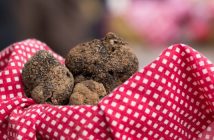I am sitting at a roadside café in the Kasbah, watching an endless stream of traffic. There are bicycles, taxis, donkeys with carts, mopeds, wheelbarrows, an occasional horse and carriage and, of course, people. They press on in every direction muddled together in one great jostling mass, all consumed with their own sense of purpose, pursuing the business of one of the globe’s most enchanting, mercantile, chaotic cities. Above them, on the ramparts, storks build their appropriately dishevelled nests and look down on the turbulent flow of life below.
Marrakech is usually described as a red city but really it’s a soft, slightly shabby pink – a much easier colour on the eye under a hot sun. The pink is not only ubiquitous, it’s mandatory. So is low rise – no sky scrapers here – indeed, nothing can be built higher than the minaret of the Koutoubia tower (77m) and nothing even comes close. In its essentials, Marrakech doesn’t change.
Nowhere are you so aware of this as in the souks. You can spend a pleasant morning here, haggling over carpets, babouches (embroidered, curly-toed slippers), leather bags, copper pots, spices and the headiest of perfumes and oils – all accompanied by mint tea and a remarkable sales patter. You can pay by credit card or get cash out of the ATM, so, yes, that much has changed but only insofar as Marrakech can continue to conduct its centuries-old traditions of business with ease.
The centre of Marrakech, the medina, is surrounded by its ancient pink walls and you can take a horse and buggy to drive you round the ramparts to find your bearings. This isn’t difficult, though. All roads lead inevitably to the Place Jemaa el Fna, the vast central square that bursts into exotic life in the late afternoon with snake charmers and acrobats, story tellers and musicians, open fires cooking kebabs that send great billows of smoke into the air, sellers of dates, almonds and freshly squeezed oranges, fortune tellers and veiled women who paint henna patterns on to your hands.
There are palaces (La Bahia, El-Badi) and mosques, museums and tombs, notably those of the Saadian dynasty. Built in the sixteenth century, the tombs were only rediscovered by the French in 1917 and, hidden in the Kasbah, they open from a narrow passageway into a garden full of buildings with slender columns and fine tracery falling like cobwebs. The tombs of the Saadians, their soldiers and servants are scattered throughout the buildings and the gardens, the air scented with orange blossom and roses.
Gardens are important in Marrakech. There are huge gardens around the Koutoubia and people use them all the time. They are not only necessary as an oasis to escape the noise and heat and bustle of the city, they also have a symbolic importance. It is the green of paradise for a desert people, with the scent of flowers and the cooling sound of fountains.
One of the most beautiful of Marrakech’s gardens surrounds La Mamounia, Marrakech’s most famous hotel, built in the Twenties. And this is some oasis. Even though you’re inside the walls of the medina – they form the boundary at one edge of the garden here – it is completely quiet, save for the calls of the muezzin and birdsong. Churchill came here and painted in the winter, following the sun as it moved across the terraces. When De Gaulle came, they had to make an extra-long bed to cope with his height and have continued to make them that size ever since. The only room that Churchill would recognise now is the cigar room – everything else has changed during a recent major three-year refurbishment that saw the hotel move back in time from Art Deco to something more akin to the Alhambra Palace.
My room here is bigger than most London flats. There’s a walk-in wardrobe, a guest cloakroom and a sitting-room with deep red sofas and golden cushions and a carved wooden ceiling painted in green and gold. Intricately carved doors open into the bedroom surrounded by white tracery archways. There is a vast marble bathroom (even the basins are marble). And outside there is a double balcony with views of the garden below and the minaret of the Koutoubia beyond. There are white lilies and roses on the tables, huge copper lanterns light the rooms and push-button blinds bring total darkness for sleeping.
Breakfast is served around the pool (and it’s warm enough to sit out here in March), where swallows splash into the water, presumably to cool off. Wide, wicker loungers covered in plump white cushions surround the pool and a man in a panama hat and white gloves re-arranges your towels for you. There are another three restaurants, a Moroccan one, a French one and an Italian one with two Michelin stars. There’s also a spa fit for a pasha including an indoor pool with a canopied bed that seems to float on the water covered in silken cushions.
There’s a rich spa menu, all suitably sensual – Sweet Roses Body Wrap, Facial Ceremonies, bathing rituals. But there’s one thing here that’s uniquely Moroccan – an Argan oil massage. Whenever I come here, I buy Argan oil. It’s the foremost of the oils on sale in the souk and it’s prepared for use either as a body oil (to be used in massage) or as an edible oil (to be used on your salad). Either way, it’s pretty miraculous. It is produced near Agadir in the south-west of the country from the nuts that grow on the Argan trees. Here, they have tree-climbing goats (this is true, honest) who are wild about these nuts. They pass through the goats’ systems, though, without being absorbed – the result being that their extremely tough shells become slightly easier to crack open. Nowadays the goats generally play less of a part but the oil is still made by traditional methods, roasting the Argan kernels, grinding and pressing them by hand to produce the oil. The vast majority of the oil is produced by Berber women’s co-operatives.
So, I’m a longterm fan of Argan oil and the massage was lovely and left my skin super-soft. Afterwards, I collapsed on the balcony for a while, soaking up the late afternoon sun looking across at the snow-topped Atlas mountains while I prepared myself for the negotiation game with the traders of Jemaa el Fna. You can be sure I bought plenty of Argan oil.
A Hivernage Classic Room at La Mamounia starts from 6500 MAD (approx £443). Rates are per room and per night, VAT and service included. For reservations please book: reservations@mamounia.com or call: +212 (0) 524 388 660. For more information, visit www.mamounia.com.
New announcements from La Mamounia:
La Mamounia, in its role as patron to arts and culture, is delighted to be showcasing the work of sculptor Julien Marinetti’s truly throughout the hotel grounds in Spring and Summer. From 30th April to 30th September 2015 the hotel’s legendary gardens will showcase 60 pieces of artwork and sculptures from the Parisian artist, including sculpted dogs, penguins, pandas or ducks ranging from 36cm to 240cm – all of which compliment the natural surroundings seamlessly.
In addition, La Mamounia is delighted to offer its guests a new spa product range – Amala. Amala – which in Sanskrit means “most pure” – is the first skin care brand comprising 100% organic raw materials. Produced in Germany, Amala products benefit from meticulous, high-end scientific formulas, while respecting the natural synergy existing between the spirit and the body.




